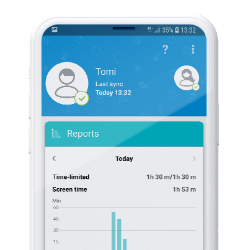Child identity theft: how do I keep my kids’ personal data safe?
Why is kids’ personal information in high demand, how do criminals steal it, and what can parents do to help prevent child identity theft?
Total identity fraud losses in the US were estimated at a whopping $43bn last year. While many of us are getting savvier about protecting our personal information online, can we say the same about our children’s data?
Child identity theft is more common than you might think. Almost a million US children were victims in 2022, with incidents costing an average of $1,128 per household and taking 16 hours to resolve. That amounts to a problem costing Americans over $1bn annually. This alone should be enough to focus our minds on the task at hand. So why is kids’ personal information in such high demand, how is it getting stolen, and what can parents do to stop it?
Fraudsters use children’s identity data for many of the same ends as they do adults’ information:
Why are youngsters’ details so popular among the criminal fraternity? A big part of the attraction is the fact that children typically don’t have bad credit ratings. That means the fraudster has greater confidence that banks or government agencies will not block their attempts to monetise stolen identity data. The victim is also less likely to notice that their identity has been stolen because—even if they have one – kids won’t be primed to check their bank account or credit report regularly. Scams may go unnoticed for years.
Another popular technique which lends itself well to child identity data is synthetic fraud. This is when a scammer combines personal data from several sources: some real, some fake. A brand-new identity is thus created using that all-important child data to ensure a clean credit history.
The cybercrime underground is a well-oiled machine where different actors have different roles. Cybercriminals typically harvest personal data and sell it on dark web marketplaces and forums for fraudsters to use in follow-on attacks.
Phishing via email, social media or even text. Individuals are lured to click on malicious links, potentially installing information-stealing malware, or else tricked into handing over their personal details – perhaps to enter a non-existent prize draw.
Third-party breaches. Roughly 1.7 million American children, or 1 in every 43, had their personal information exposed and potentially compromised via a data breach last year due to no fault of their own.
Account takeover: Gaming, social media and even online learning accounts can be valuable troves of identity information. They can be compromised via phishing attacks, brute-force password cracking/guessing and other techniques.
Oversharing on social media: Parents can be as guilty as their kids of sharing too much personal information via social accounts. Even birth dates and details about their schooling can be weaponised in follow-on scams designed to elicit more info.
Family members: Familial fraud is shockingly common. In an estimated 67% of households that experience child identity fraud, the victim personally knew the perpetrator(s). Close-up access to sensitive documents gives these family members the perfect opportunity, and an assumption of innocence means fraud can go undetected for years.
Physical theft: The old ways are still popular, such as seizing documents from the trash or even direct from the mail.
Fortunately, several tried-and-tested best practices can have a significant positive impact on child identity risk and need not be too onerous. They include:
Alongside preventative measures, it makes sense to stay alert to the prospect of fraud attempts using your children’s identity data. The following are tell-tale signs something may be wrong:
If the worst happens, it’s important to take action quickly. Get a credit report for your child, and if there’s anything there, immediately freeze it. Next up:


With ESET Parental Control for Android
TRY FREE FOR 30 DAYSWhy is kids’ personal information in high demand, how do criminals steal it, and what can parents do to help prevent child identity theft?
Imagine having a conversation with a machine that understands the meaning of almost every word you say or type and responds with near-to-humanlike language. That's the promise of ChatGPT, an advanced language model developed by OpenAI. With the ability to generate text that is often indistinguishable from that of a human, ChatGPT has captured the attention of researchers, developers, and the general public. But how can ChatGPT impact your children and their education?
Today's kids are exposed to technology from an early age. Can new technology, specifically machine learning and artificial intelligence, actually help kids become more creative? These AI-powered models provide inspiration, generate ideas, and offer feedback that can help spark creativity and encourage kids to think outside the box. How can AI enhance children’s creative skills?